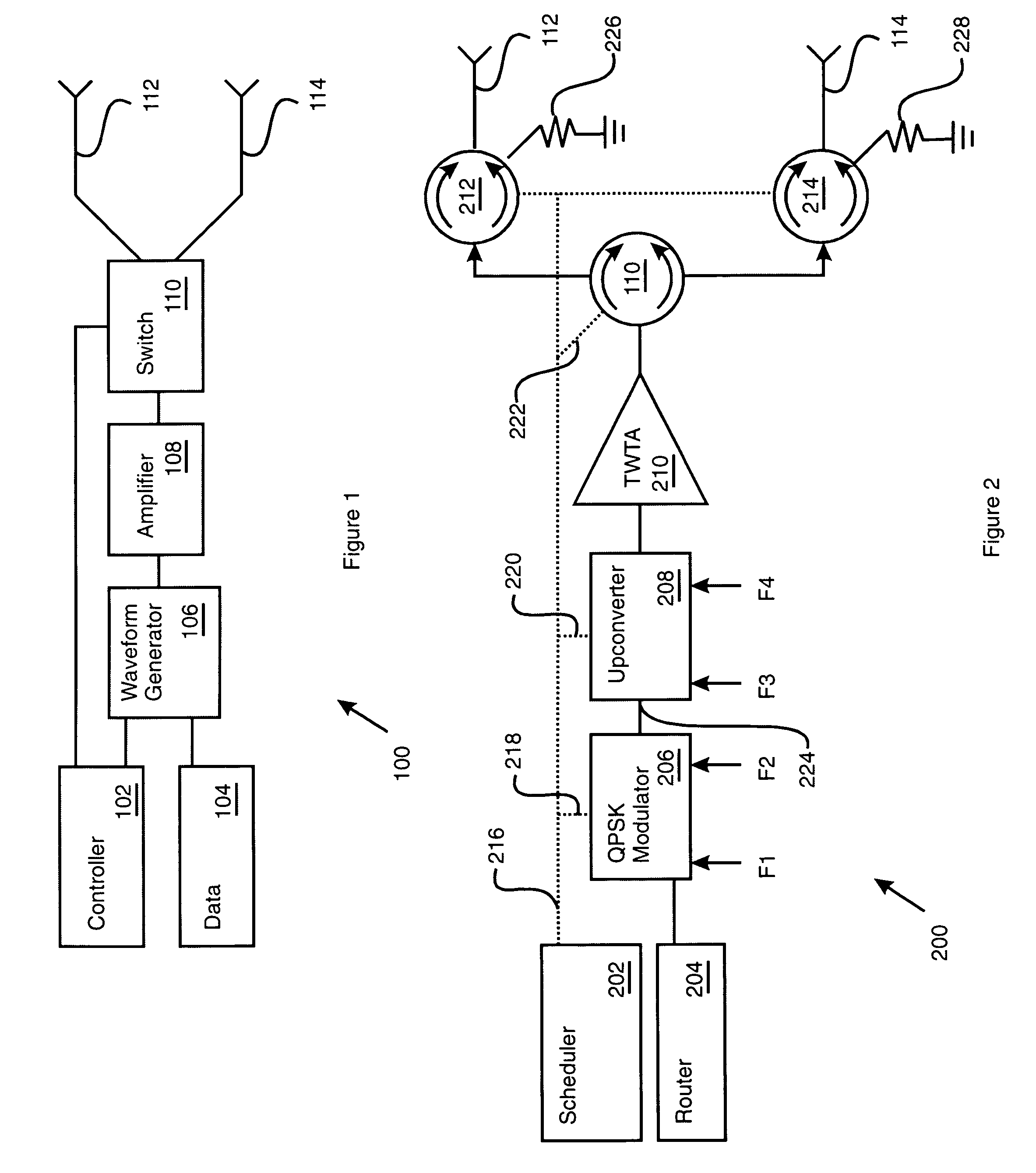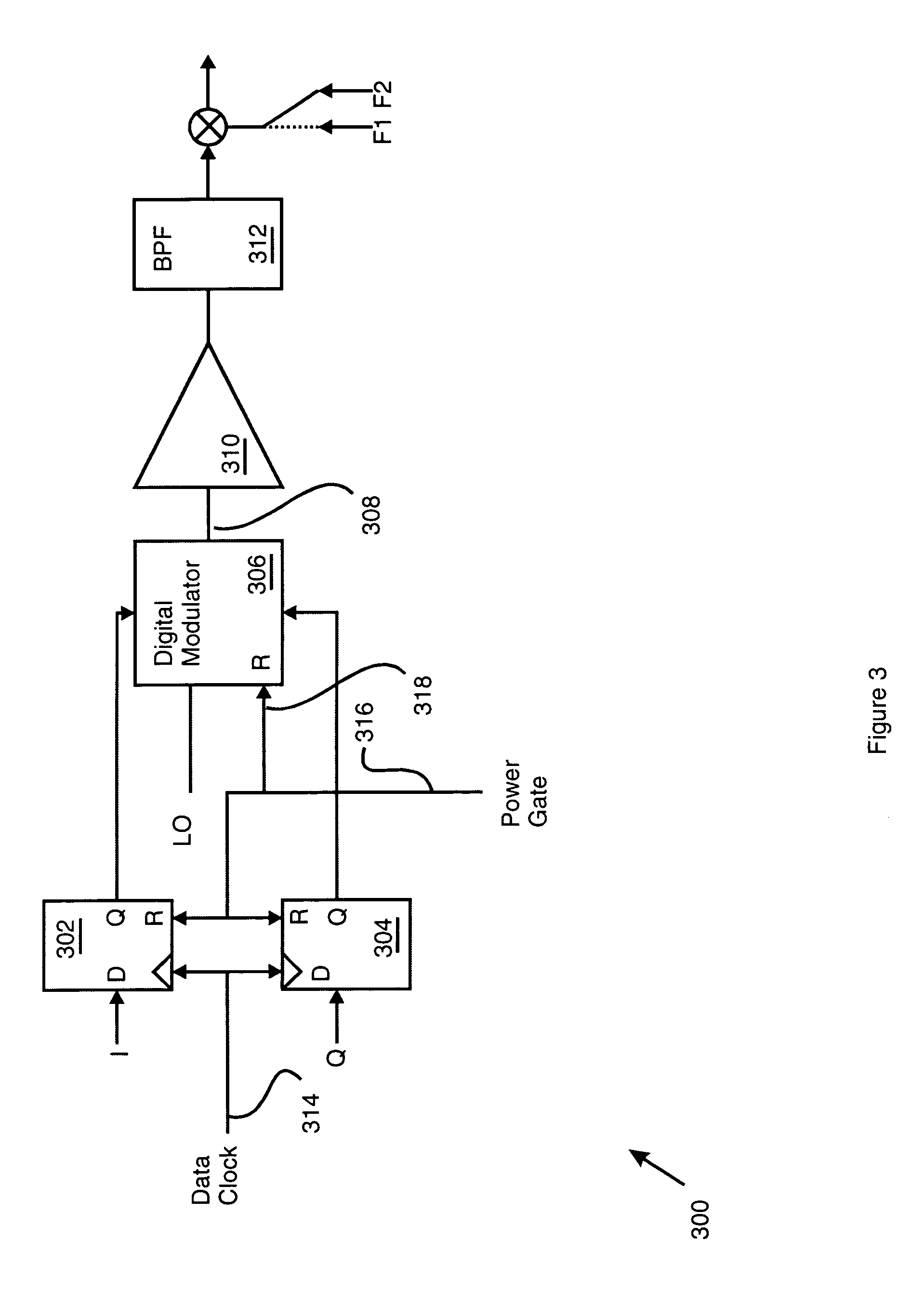Beam laydown for hopped satellite downlink with adaptable duty cycle
a satellite downlink and duty cycle technology, applied in the field of satellite communications systems, can solve the problems of increasing the bandwidth demand of the satellite, unable to meet the increase in bandwidth demand, and unable to provide additional spot beams for the cell, so as to reduce interference
- Summary
- Abstract
- Description
- Claims
- Application Information
AI Technical Summary
Benefits of technology
Problems solved by technology
Method used
Image
Examples
Embodiment Construction
[0017]Turning now to FIG. 1, that figure shows a block diagram of a power gating module 100 that also functions, in general, to generate downlink frame waveforms. The power gating module 100 includes a controller 102 and a waveform processing chain that operates on data provided by the data source 104 (which may be a data memory organized by data queues, for example). In particular, the waveform processing chain includes a waveform generator 106, a power amplifier 108, and a switch 110. The waveform processing chain further includes a first feed path 112 and a second feed path 114.
[0018]The first feed path 112 and the second feed path 114 may, for example, connect to individual antenna feed horns to direct spot beam coverage to distinct terrestrial cells. The feed paths 112-114 may also be characterized by a polarization effect on the waveform that propagates along the feed paths 112-114, including clockwise or counter clockwise circular polarization.
[0019]The waveform generator 106...
PUM
 Login to View More
Login to View More Abstract
Description
Claims
Application Information
 Login to View More
Login to View More - R&D
- Intellectual Property
- Life Sciences
- Materials
- Tech Scout
- Unparalleled Data Quality
- Higher Quality Content
- 60% Fewer Hallucinations
Browse by: Latest US Patents, China's latest patents, Technical Efficacy Thesaurus, Application Domain, Technology Topic, Popular Technical Reports.
© 2025 PatSnap. All rights reserved.Legal|Privacy policy|Modern Slavery Act Transparency Statement|Sitemap|About US| Contact US: help@patsnap.com



